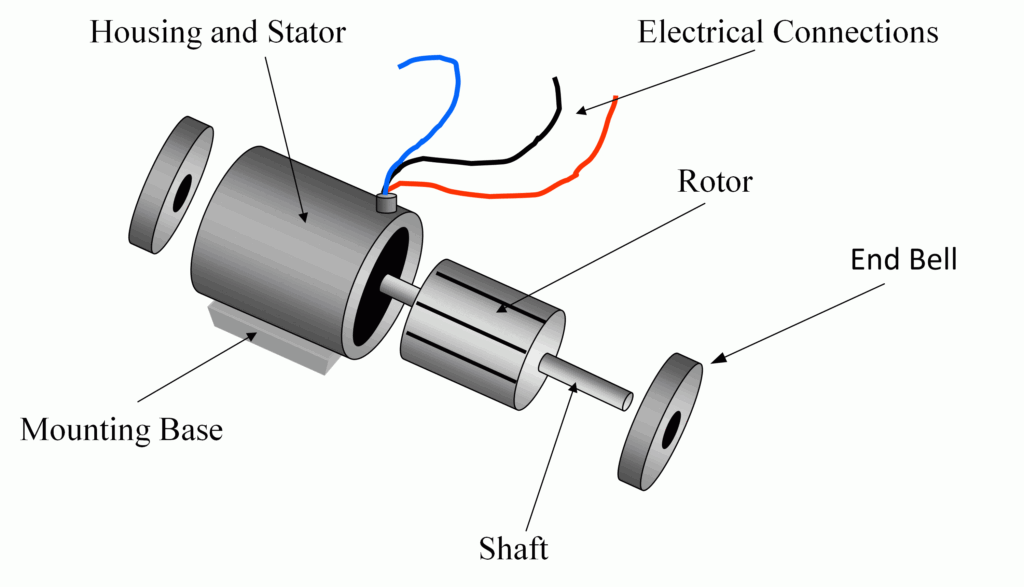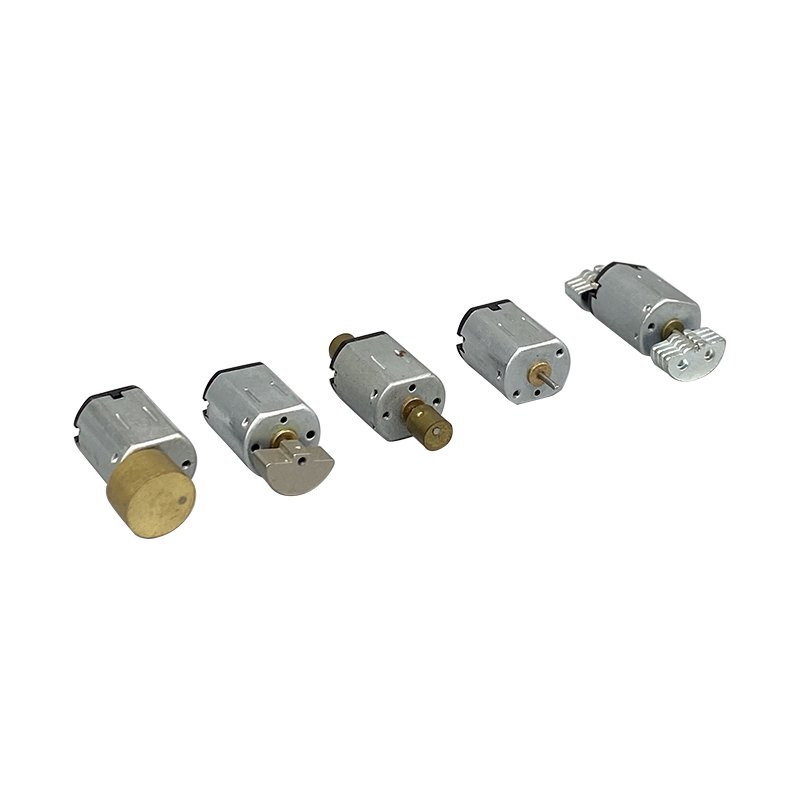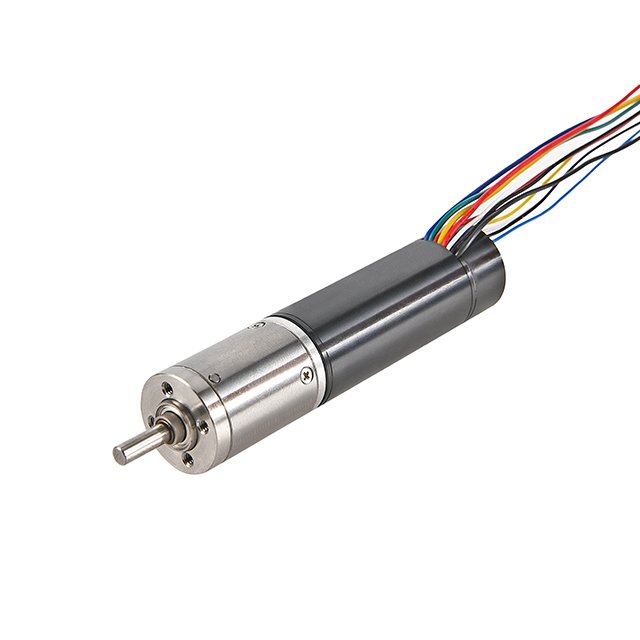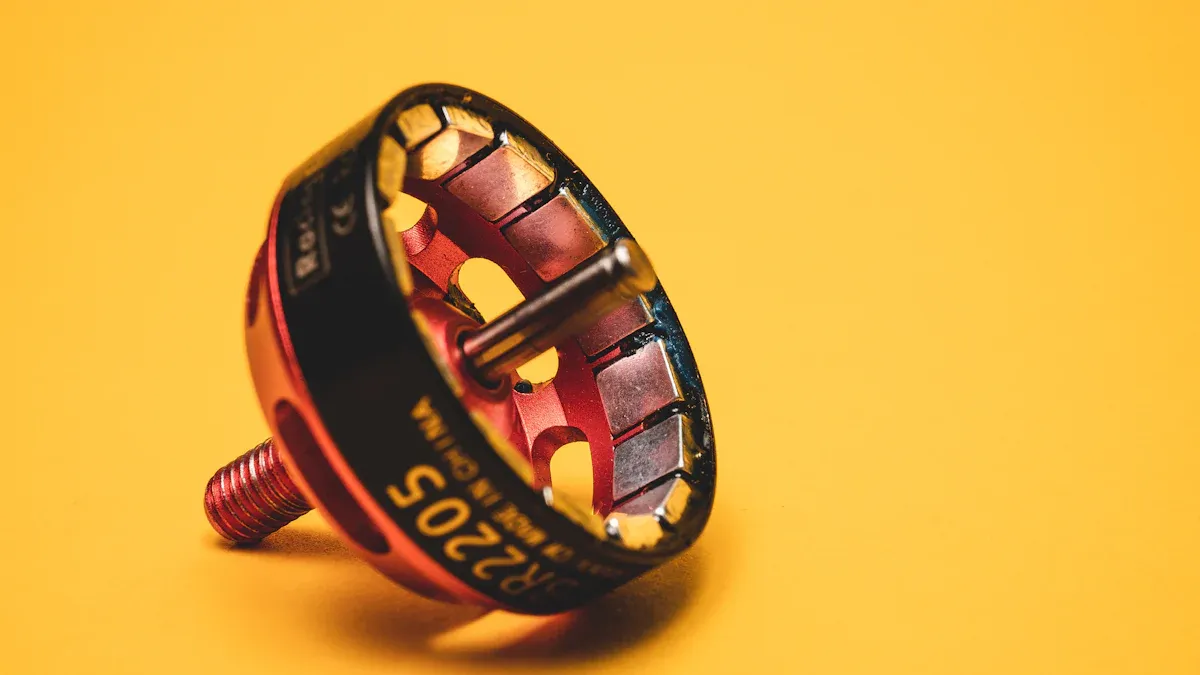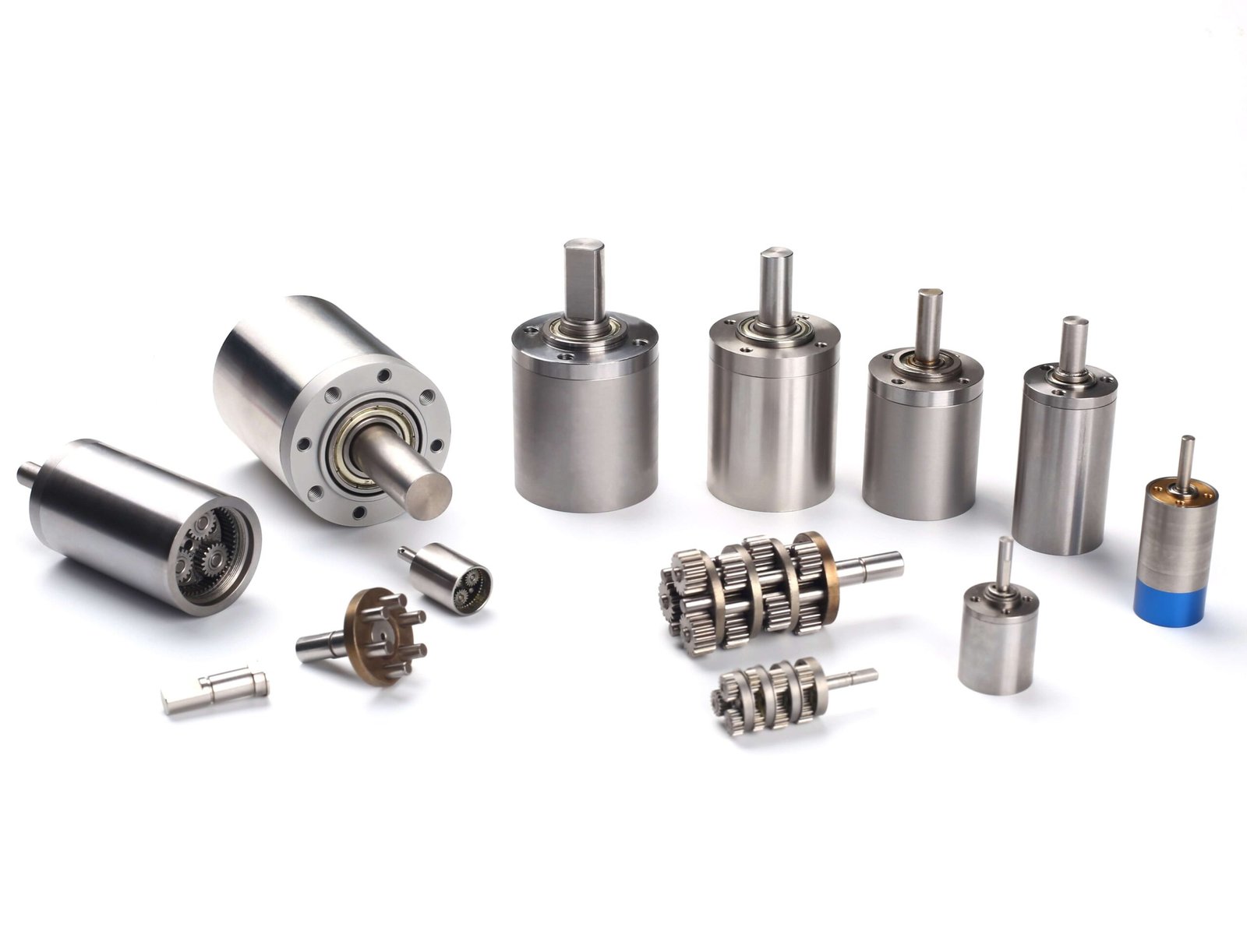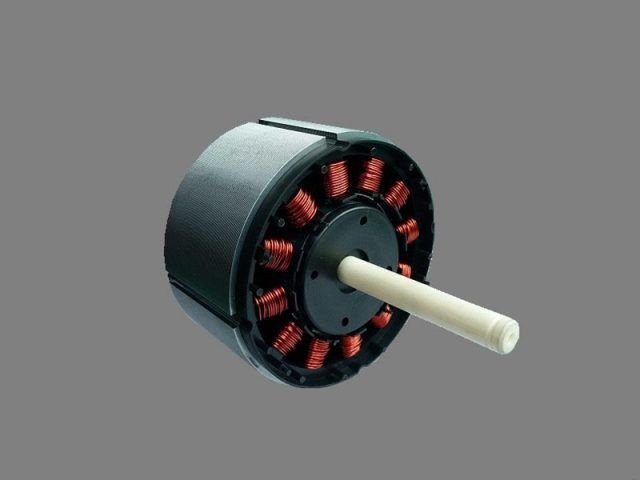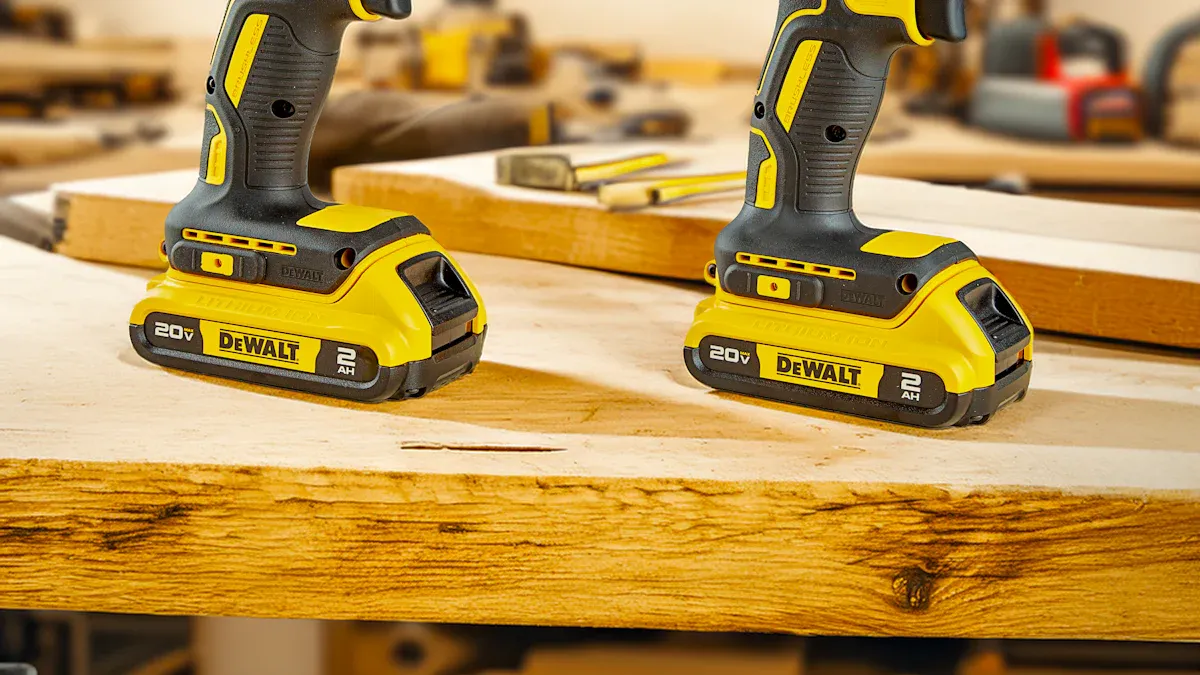Choosing the right motor starts with knowing what you need. You should think about your technical needs and the place where you will use the motor. Picking the right motor helps you save money on energy bills. It also helps stop surprise breakdowns. If you use the wrong motor, it can cost more to run. It may not work well or meet rules for saving energy. You should check your load, speed, torque, power, and how much money you can spend. The right motor can help you follow rules, need less fixing, and maybe get rebates. There are many Motor Electric Systems to pick from, so take your time to choose the best one for you.
Key Takeaways
First, know what your job needs like load, speed, torque, and environment. This helps you pick the right motor type and size.
Pick motors that have high efficiency ratings. This saves energy and lowers costs over time.
Make sure the motor’s power, precision, and control match your job. This gives better performance and fewer problems.
Look at the motor’s size, mounting, and protection ratings. This makes sure it fits your space and works in your environment.
Test the motor with your control system before using it fully. Plan regular maintenance to keep it working well.
Application Needs
Load & Speed
First, you need to know the load and speed your motor will handle. In industrial automation, the load can change with each job. Some motors work with variable horsepower and constant torque. These are used for things like conveyors or gear pumps. Other motors handle variable torque, such as fans or mixers. You should match the motor’s torque-speed curve to what your job needs.
Constant speed jobs use simple on and off controls.
Variable speed jobs need careful speed control to save energy and help the process.
Position control jobs need high accuracy and feedback devices.
Most motors in factories work best at half to three-fourths of their load. If you pick a motor that is too big, it wastes energy. Variable frequency drives help you change speed and save energy, especially for jobs with changing torque.
Torque & Precision
You need to check how much torque and precision your job needs. For robotics or CNC machines, you need high precision and accuracy. Servo motors can be very accurate, within about ±0.5 degrees. Some can be even more exact, up to ±0.1 degrees. Robots can repeat moves as close as ±0.02 mm.
Parameter | Details |
|---|---|
Torque Ranges | 1/10 hp to over 50 hp (from small robots to big machines) |
Positioning Accuracy | ±0.5 degrees (normal), ±0.1 degrees (very high) |
Application Examples | Robotics, CNC machines, assembly lines |
Control Features | Closed-loop feedback for real-time changes |
Stepper motors are good for jobs that need medium precision at slow speeds. Servo motors are better for high precision, fast, and changing jobs. Always make sure the motor’s accuracy and precision fit your needs.
Power & Environment
Check the power you need and where you will use the motor. In faraway places, you may need motors that work with less power and have extra safety.
In factories, you must think about:
Altitude: If you are above 1000 meters, motors need special settings.
Dust and moisture: Pick motors with the right IP rating.
Hot or cold: Use motors that handle heat or cold well.
Vibration and shock: Pick motors with strong frames and balanced rotors.
Bad air flow: Enclosed motors like TEFC keep out dirty air.
Always match the motor to your power supply and the place you will use it. This helps your motor last longer and work well in your automation system.
Motor Electric Systems Overview
Electric Motors Types
You will find several main motor types in motor electric systems. Each type has unique features and uses.
AC motors use alternating current and are common in factories.
DC motors run on direct current and work well for simple speed control.
Stepper motors move in small steps, making them good for jobs that need precise moves.
Servo motors use feedback to control speed and position. They can be AC or DC, brushed or brushless.
Brushless DC motors use electronic parts instead of brushes, which makes them last longer and need less fixing.
Here is a quick look at how these electric motors differ:
Motor Type | Power Source | Control Method | Key Feature |
|---|---|---|---|
AC Motor | AC | Varies (simple to advanced) | Good for steady speed |
DC | Voltage control | Simple, easy to use | |
Stepper Motor | DC | Step pulses | Moves in small steps |
Servo Motor | AC/DC | Feedback loop | High precision and speed |
DC | Electronic control | High efficiency, low wear |
Strengths & Weaknesses
Each motor type in motor electric systems has its own strengths and weaknesses.
AC motors work well for long, steady jobs and need little care.
DC motors are easy to control but need more fixing because of brushes.
Stepper motors are simple and cheap, but they can lose steps if overloaded.
Servo motors give you high speed and accuracy, but they cost more and need special controls.
Brushless DC motors last longer and need less care than brushed motors, but they cost more at first.
Tip: Brushless motors need less maintenance and last longer because they do not have brushes that wear out. This saves you time and money over the life of the motor.
Best Uses
You should match the motor type to your job.
Use AC motors for pumps, fans, and conveyors that run all day.
Pick DC motors for small tools or toys where you want simple speed changes.
Choose stepper motors for 3D printers, CNC machines, and robots that need exact moves.
Select servo motors for robots, CNC machines, and places where you need fast, accurate moves.
Brushless DC motors work best in drones, electric cars, and places where you want quiet, long-lasting motors.
You will see stepper motor and servo motor used a lot in automation. Stepper motor is great for simple, repeatable moves. Servo motor is better when you need high speed, smooth moves, and feedback. In many motor electric systems, you will use both stepper motors and servo motors for different tasks. Knowing the strengths of each helps you pick the right electric motors for your needs.
Steps to Selecting the Right Motor
Motor Selection Process
Selecting the right motor for your application starts with a clear process. You need to match your needs to the features of electric motors. Follow these steps to select the right motor and avoid costly mistakes:
Define Your Application Needs
Start by listing what your job requires. Check if your load is static or dynamic. Write down the speed you need. Note your power supply type and voltage. Think about the environment, such as temperature, dust, or moisture.Understand Motor Types
Learn about the main types of electric motors. Stepper motor works well for precise, slow moves. Servo motor gives you high speed and accuracy. AC and DC motors fit many basic jobs.Review Motor Ratings
Look at voltage, current, power, torque, and speed. Make sure these match your needs. Use product filters on supplier websites to narrow your choices.Check Mounting and Size
Measure the space you have. Make sure the motor fits. Check the mounting type and protection ratings, like IP ratings for dust or water.Pair with Gear Reducers
Sometimes, you need to add a gearbox. This helps you get the right torque and speed. Gear reducers also help manage inertia and improve control.Use Engineering Tools
Use online motor sizing tools. These tools help you enter your data and get the best motor options.Test and Troubleshoot
After you select the right motor, test it in your system. Make sure it meets your needs. If it does not, adjust your choice.
Tip: If you cannot find a standard motor that fits, consider custom options. Always test the motor before full use.
Sizing & Efficiency
Motor sizing is a key part of motor selection. If you size the motor wrong, you may waste energy or damage your system. Here is how you can size a motor:
Calculate Inertia
Find the moment of inertia for all moving parts. This includes the load, belts, pulleys, and gearboxes. Inertia tells you how hard it is to start or stop the load.Determine Torque Needs
Add up all the forces, like friction and gravity. Figure out how much torque you need to move and stop the load.Analyze the Motion Profile
Look at how fast you need to move, how quickly you must start or stop, and how far you need to go. This helps you pick the right speed and acceleration.Check Duty Cycle
Decide if your motor will run all the time or just sometimes. Motors that run non-stop need to handle more heat.Use Sizing Tools
Many websites offer motor sizing tools. Enter your numbers to get a list of motors that fit your needs.Review Efficiency Ratings
Higher efficiency ratings, like IE3 or IE4, save more energy over time. Even if these motors cost more at first, they lower your energy bills. Over 20 years, energy use makes up most of the cost of owning a motor.
Efficiency Class | Description | Energy Savings | Upfront Cost | Best Use Cases |
|---|---|---|---|---|
IE1 | Standard | Low | Low | Basic, low-use jobs |
IE2 | High | Medium | Medium | General applications |
IE3 | Premium | High | Higher | Continuous operation |
IE4 | Super Premium | Highest | Highest | Energy-critical jobs |
Note: Replacing old motors with higher efficiency models can cut your energy use and lower your bills.
Control & Integration
You must also think about how the motor will work with your control system. Good integration makes your system safer and more flexible.
Check Control System Specs
Write down what your control system can do. Look at communication protocols, such as Profinet or Modbus. Make sure your motor can talk to your system.Choose the Right Control Method
For simple jobs, V/f control works well. For more precise jobs, use vector control or direct torque control. Variable frequency drives (VFDs) let you change speed and save energy.Verify Feedback Devices
If you use a stepper motor or servo motor, check that encoders or sensors match your control system.Test Compatibility
Before you install the motor, test it with your controls. Fix any problems before full use.Plan for Maintenance
Pick motors that are easy to maintain. Follow industry standards, like ANSI/EASA AR100-2015, to keep your motors safe and reliable.Consider Integration Benefits
Integrated motors can save space and reduce wiring. They also make your system easier to build and fix.
Tip: Use PLC-controlled motors for better flexibility. Modern controls let you use one motor for many jobs by changing speed, direction, or torque.
By following these steps to selecting the right motor, you can match your needs to the best electric motors. Use motor selection guidelines, check efficiency ratings, and make sure your motor fits your control system. Always test before final use. This process helps you select the right motor, save energy, and keep your system running smoothly.
Practical Considerations
Installation & Space
When you install a motor, you need to check the space and layout first. Compact machines often have strict limits. You must look at the size, weight, and shape of the motor. The shaft size and length also matter. If the motor is too big, it will not fit. If it is too heavy, it may cause problems with balance or support.
Mechanical size, such as outside diameter and shaft length, is the main limit in small machines.
Torque output comes next. You need enough torque, but not too much for the space.
Motor inertia should stay below 10% of the load inertia. If not, you may need to adjust your torque needs.
Think about how you will connect the motor to your machine.
Cooling and thermal limits can affect your choice.
Always check the IP rating. For outdoor or washdown areas, motors with IP65 ratings protect against dust and water jets. Higher IP ratings may be needed for harsh environments.
Cost & Maintenance
You should compare both the upfront and long-term costs when picking a motor. AC motors usually cost less at the start and need less fixing. Brushless DC motors cost more at first, but you save on maintenance because they have no brushes. DC motors with brushes need more care and cost more over time.
Motor Type | Initial Cost | Maintenance Needs |
|---|---|---|
AC Motor | Low | Minimal |
Brushless DC Motor | High | Very low |
DC Motor (Brushed) | Medium-High | Frequent (brushes) |
Maintenance is easier with AC and brushless motors. DC motors often need expert help for repairs. If you want to keep costs low, choose a motor that matches your skills and resources for upkeep.
Reliability & Lifespan
A good motor should last many years if you use it right. Most industrial motors work for 12 to 15 years under normal use. With good care, some motors last over 20 years. Bearings often fail first, so keep them clean and well-oiled. Harsh conditions, like dust or heat, can shorten motor life to less than a year. Regular checks and proper sizing help your motor last longer.
Servo motors give you high reliability and never miss steps, which is key for precise jobs.
Stepper motors last long with little care, but can lose steps if loads change.
Brushless motors offer the best service life and lowest maintenance.
Tip: Plan regular checks and keep your motor clean. Good care can double its lifespan and save you money.
Final Motor Selection
Checklist
Before you pick your motor, use a checklist. This helps you not miss anything. It also keeps your project moving the right way. Here is a simple list you can use:
Write down what your job needs. List the load, speed, torque, duty cycle, and accuracy.
Pick your power source. Write the voltage, frequency, and top current.
Look at the place you will use the motor. Check the temperature, humidity, altitude, and if it is a dangerous area.
Write the size, weight, and how long you want the motor to last. Add how often you need to fix it, speed, torque ratings, and duty cycle.
Make sure you know how to mount the motor and how much space you have. Check for side or overhung loads and what kind of oil or grease you need.
Pick the best type for your job. Compare AC, DC, stepper, and servo motors.
Figure out the power and torque you need. Use your load and speed numbers.
Think about how you will control the motor. Decide if you need to control speed or position.
Make sure you follow safety rules and industry standards.
Look at the data sheets and performance charts from the maker.
Plan how you will take care of the motor later. You might want to add sensors for heat or shaking.
If you can, test a sample motor in your job.
Tip: For special jobs, like pumping water or making food, check for extra needs. You may need washdown, corrosion, or explosion-proof features.
When to Consult Experts
Sometimes, picking a motor is hard or has strict safety rules. In these times, you should ask an expert for help. Experts are helpful when you need to:
Work in dangerous places or follow safety codes.
Use motors in tough spots, like high heat, wet air, or lots of dust.
Pick types for jobs with changing speeds or lots of starts and stops.
Move heavy loads or need special ways to mount the motor.
Figure out how to protect circuits so breakers do not trip.
Choose winding setups for special wiring.
Experts know local rules and can help you not make mistakes. Their help keeps your system safe and working well.
To select the right motor, you need to follow a clear process. Start by matching the motor type to your job’s speed and torque needs. Check power output for your load. Look at efficiency to save energy. Manage heat and plan for regular checks. Think about space, noise, and how the motor fits your system. Make sure your controls work with the motor. Use the checklist to guide your choice. For tough jobs, talk to a supplier or expert for help.
Match motor type to your application’s speed and torque needs.
Check power output for your load.
Choose motors with good efficiency for your duty cycle.
Manage heat to keep motors running well.
Plan maintenance and routine checks.
Focus on energy efficiency for lower costs.
Consider space, mounting, noise, and vibration.
Ensure electrical and control compatibility.
Use modular options for easy upgrades.
Follow safety and industry standards.
Keep learning about new motor technologies. Expert advice can help you solve unique challenges and improve your system.
FAQ
What is the most important factor when choosing a motor?
You should always start with your application needs. Think about load, speed, and torque. These factors help you pick the right motor type and size for your job.
How do I know if my motor is energy efficient?
Check the efficiency class on the motor label. Look for IE3 or IE4 ratings. These motors use less energy and save you money over time.
Can I use any motor in a wet or dusty area?
No. You need a motor with a high IP rating, like IP65 or higher. This rating protects the motor from water and dust. Always check the environment before you choose.
Do I need a gearbox with my motor?
You need a gearbox if your job requires more torque or slower speed than the motor alone can provide. Gearboxes help match the motor to your application.
When should I ask an expert for help?
Ask an expert if your job has special safety rules, harsh environments, or complex control needs. Experts help you avoid mistakes and keep your system safe.
